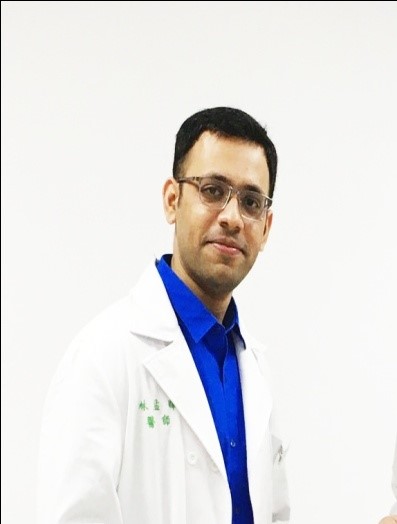Gallbladder Surgery | Gallbladder Stones Surgery | Gall Bladder Stone Treatment | Gallbladder Removal Surgery | Gallbladder Surgery Cost | Gallbladder Stone Surgery Cost in India | Gallbladder Surgeon | Gallbladder Doctor | Gallbladder Doctor | Gallbladder Hospital | Gallbladder Specialist in India | Gallbladder Surgery Clinic in India
Dr. Ashish Vashistha
MBBS, MS, FNBE (MAS), Head Department of Surgery Senior Consultant Laparoscopic & Bariatic (Obesity) Surgeon
20 Years Experience
Dr. Vashistha is a renowned....
Dr. Dr. Karan Rawat
MBBS MS FMAS DMAS FICRS FIAGES
Ex Attending Consultant Nayati Hospital - Mathura UP Ex Attending Consultant Max Healthcare Patparganj - Delhi Ex Attending Professor Sharda Hospital Noida Safe Surgery Center Civil Lines Surgery - Agra Years Experience
Advanced Laproscopic/ Robotic/ Bariatric/General Surgeon Safe Surgery Center Civil Lines Agra
Dr. Dr Ankit Potdar
MBBS, MS (Surgery), FMAS, FALS,FMAS(AMASI) DIPLOMA IN THORASIC SURGERY , DIPLOMA IN OESOPHEGEAL SURGERY From NUTH, TAIWAN. FELOWSHIP IN SINGLE PORT SURGERY. Department of Surgery, GLOBAL Hospital, parel, Mumbai
Junior consulatant in Global hospital, mumbai. Fellow in National taiwan university hospital, taiwan. Ex Assistant professor in MGM medical college , Navi Mumbai. Consualtant Laparoscopic surgeon in various nursing hospital in Mumbai. Years Experience
Special Interests - Single port surgery, Advanced laproscopic GI surgery, Thorasic and Oesophageal surgery. Intern (Rotatory posting in all departments) - Bhatia Hospital, Tardeo, Mumbai Resident - Medical officer in Holy family hospital, Bandra, Mumbai. ICU incharge in Siddharth hospital, Goregaon,....
Gall stones form in the Gall bladder, a small organ located under the liver. The gallbladder aids in the digestive process by storing bile and secreting it into the small intestine when food enters. Bile is a fluid produced by the liver and is made up of several substances, including cholesterol, bilirubin, and bile salts.
What are Gallstones?
Gallstones are pieces of solid material that form in the gallbladder. These stones develop because cholesterol and pigments in bile sometimes form hard particles.
The two main types of gallstones are:
- Cholesterol stones: Usually yellow-green in color, approximately 80% of gallstones are cholesterol stones.
- Pigment stones: These stones are smaller and darker and are made up of bilirubin.
What Causes Gallstones?
Several factors may come together to create gallstones, including:
- Genetics
- Body weight
- Decreased motility (movement) of the gallbladder
- Diet
Gallstones can form when there is an imbalance in the substances that make up bile. For instance, cholesterol stones may develop as a result of too much cholesterol in the bile. Another cause may be the inability of the gallbladder to empty properly.
Pigment stones are more common in people with certain medical conditions, such as cirrhosis (a liver disease in which scar tissue replaces healthy liver tissue) or blood diseases such as sickle cell anemia.
What Are the Risk Factors for Gallstones?
Risk factors for getting gallstones include:
- Genetics: If other people in your family have had gallstones, you are at increased risk of developing gallstones.
- Obesity: This is one of the biggest risk factors. Obesity can cause a rise in cholesterol and can also keep the gallbladder from emptying completely.
- Estrogen: Estrogen can increase cholesterol and reduce gallbladder motility. Women who are pregnant or who take birth control pills or hormone replacement therapy have higher levels of estrogen and may be more likely to develop gallstones.
- Ethnic background: Certain ethnic groups, including Native Americans and Mexican-Americans, are more likely to develop gallstones.
- Gender and age: Gallstones are more common among women and older people.
- Cholesterol drugs: Some cholesterol-lowering drugs increase the amount of cholesterol in bile, which may increase the chances of developing cholesterol stones.
- Diabetes: People with diabetes tend to have higher levels of triglycerides (a type of blood fat), which is a risk factor for gallstones.
- Rapid weight loss: If a person loses weight too quickly, his or her liver secretes extra cholesterol, which may lead to gallstones. Also,fasting may cause the gallbladder to contract less.
What Are the Symptoms of Gallstones?
Gallstones often don't cause symptoms. Those that don't are called "silent stones." A person usually learns he or she has gallstones while being examined for another illness.
When symptoms do appear, they may include:
- Pain in the upper abdomen and upper back; the pain may last for several hours.
- Nausea
- Vomiting
- Other gastrointestinal problems, including bloating, indigestionand heartburn, and gas
How Are Gallstones Diagnosed?
If your doctor suspects you have gallstones, he or she will do a physical exam and may perform various other tests, including the following:
- Ultrasound: This procedure produces images of various parts of the body and can be used to identify gallstones.
- CAT scan: This test uses specialized X-rays to create cross-section images of organs and body tissues.
- Magnetic resonance cholangiopancreatography (MRCP): This test uses a magnetic field and pulses of radio wave energy to get pictures of structures inside the body, including the liver and the gallbladder.
- Cholescintigraphy (HIDA scan): This test can determine whether the gallbladder is contracting correctly. A radioactive material is injected into the patient and makes its way to the gallbladder. The technician can then observe the movement of the gallbladder.
- Endoscopic ultrasound: This test combines ultrasound and endoscopy to look for gallstones.
- Endoscopic retrograde cholangiopancreatography (ERCP): The doctor inserts an endoscope through the patient's mouth down to the small intestine and injects a dye to allow the bile ducts to be seen. The doctor can often then remove any gallstones that have moved into the ducts.
How Are Gallstones Treated?
Gallstones are usually treated with surgery to take out the gallbladder. The traditional operation is called an open cholecystectomy. A newer procedure, called laparoscopic cholecystectomy, is less invasive, has fewer complications, and is used more often.
- Laparoscopic cholecystectomy: During this procedure, instruments, a light, and a camera are passed through several small incisions in the abdomen. The surgeon views the inside of the body by looking at a video monitor. This procedure is used in of the majority of gallbladder removals. After the surgery, the patient spends the night in the hospital. Dr Ashish Vashistha Senior Laparoscopic Surgeon specializes in Mini Laparoscopic Cholecystectomy thus giving minimal scar and extremely good post operative results.
- Open cholecystectomy: This is a more invasive procedure in which the surgeon makes incisions in the abdomen to remove the gallbladder. The patient stays in the hospital for a few days after the surgery.
If gallstones are in the bile ducts, endoscopic retrograde cholangiopancreatography may be used to find and remove them before or during gallbladder surgery.



